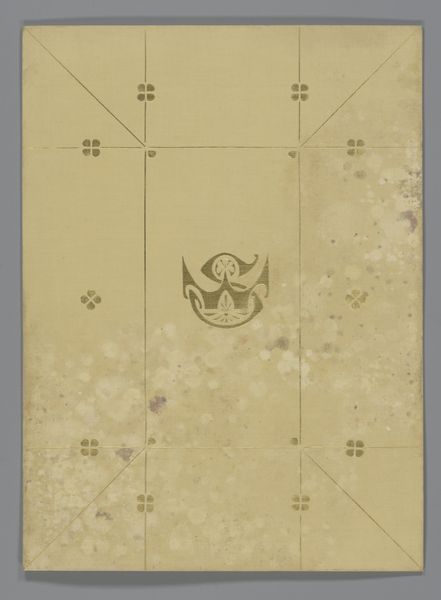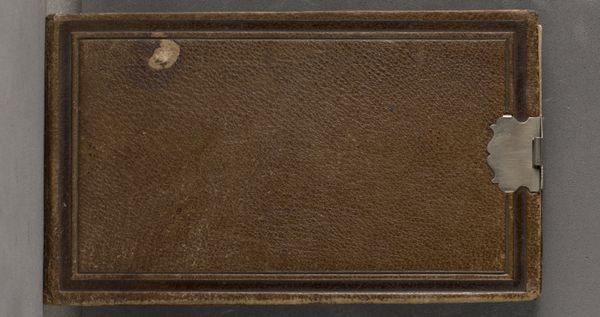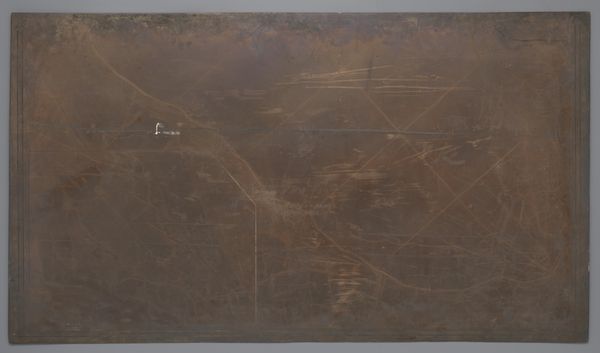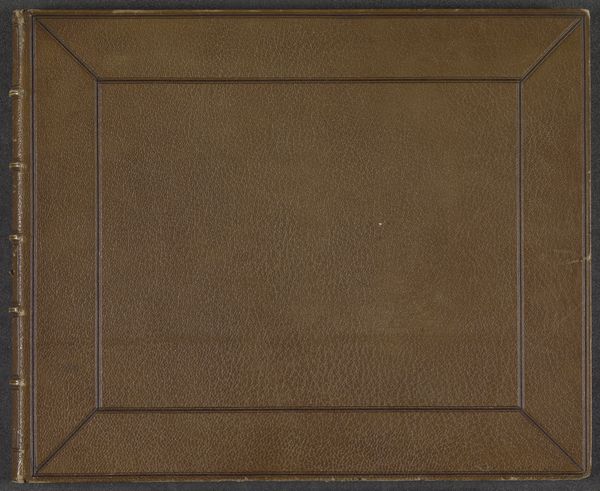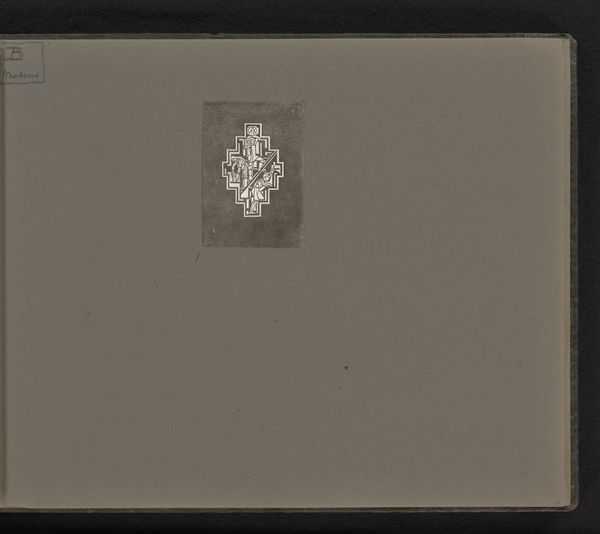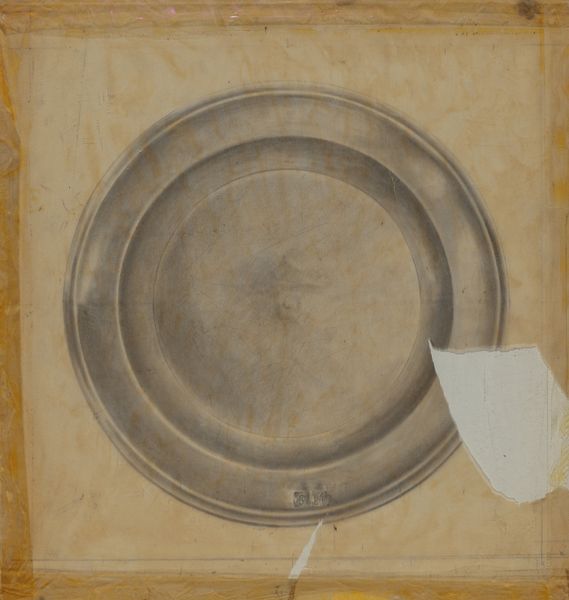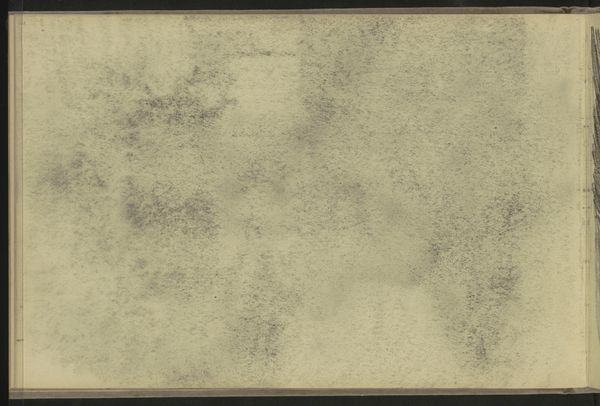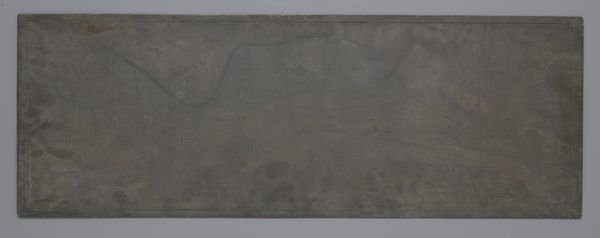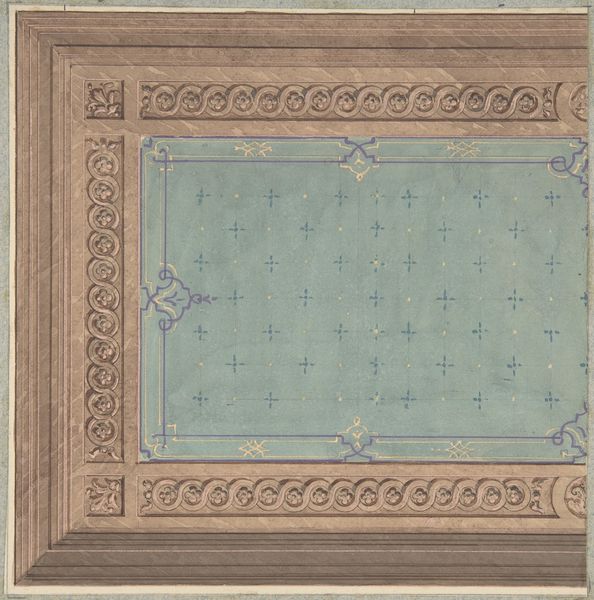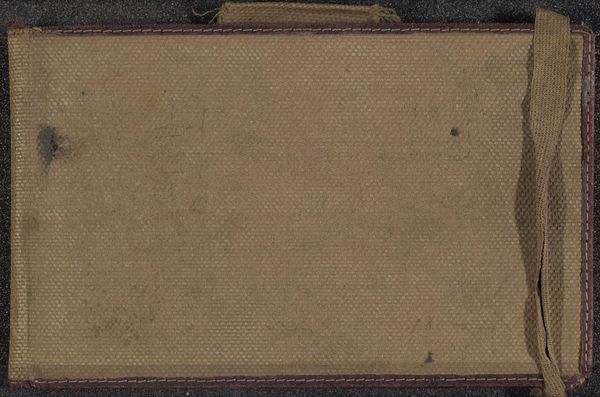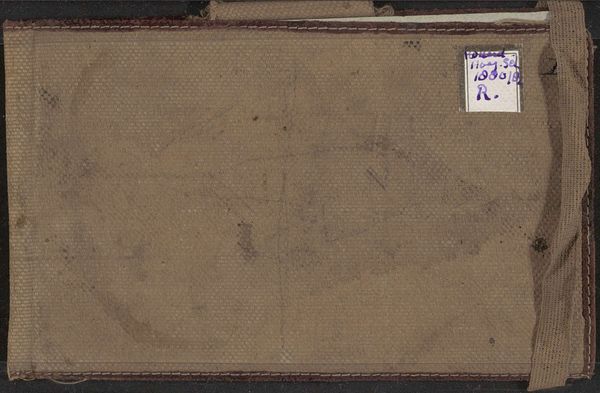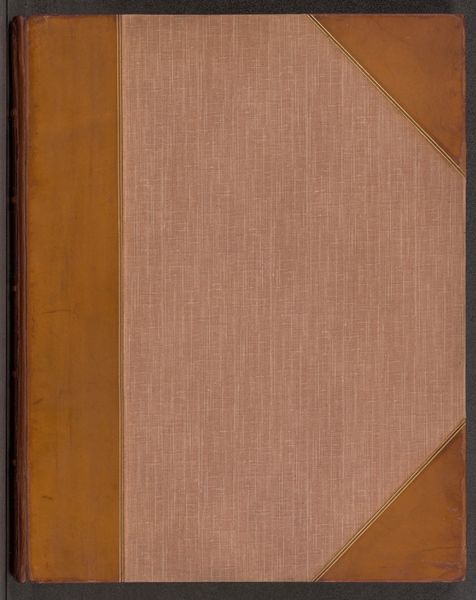
Ontwerp voor de achterkant en rug van een boekband 1874 - 1945
0:00
0:00
drawing, graphic-art, paper
#
drawing
#
graphic-art
#
art-nouveau
#
paper
#
form
#
geometric
#
line
Dimensions: height 413 mm, width 376 mm
Copyright: Rijks Museum: Open Domain
Editor: Here we have "Ontwerp voor de achterkant en rug van een boekband," a design for the back and spine of a book binding, made sometime between 1874 and 1945 by Carel Adolph Lion Cachet. It's a drawing on paper. The bold lines give it a striking, graphic quality, and the geometry is interesting, but what jumps out to me is the sense of planned construction visible beneath the black. What do you make of this piece? Curator: Well, I’m drawn to consider this design through a materialist lens. We have a glimpse into the production process – the artist’s hand evident in the underdrawing. We're seeing not just the end product, but the labour, the grid acting as a support for something potentially industrially reproducible. Do you notice the stark contrast between the crisp, geometric elements and the slightly irregular, hand-drawn lines? Editor: I do, it's very clear here. It almost feels like the drawing itself is acting like a book’s contents page, revealing the means of its making. Does the art nouveau styling reflect the materials that were popular then? Curator: Precisely! Think about the materials used for bookbinding at the time, the type of paper and ink available, the limitations and possibilities of the printing process. The geometric abstraction, along with that subtle use of colour, likely translated well into affordable mass production of decorative bookbindings. It merges the aesthetic desires of the Art Nouveau movement with practical production realities. What do you think of this? Editor: So it's not just about decoration, but about the entire system of creating and consuming books? That is interesting. Curator: Yes! This shifts our focus from the individual genius of the artist to the larger network of material conditions that shaped this design, and countless other books circulating within culture. The beauty really lies in that relationship. Editor: I never would have considered that a simple book cover could reveal so much about society and labor. Curator: Indeed, that’s the power of examining art through a materialist perspective. There are whole worlds inscribed within its making.
Comments
No comments
Be the first to comment and join the conversation on the ultimate creative platform.
